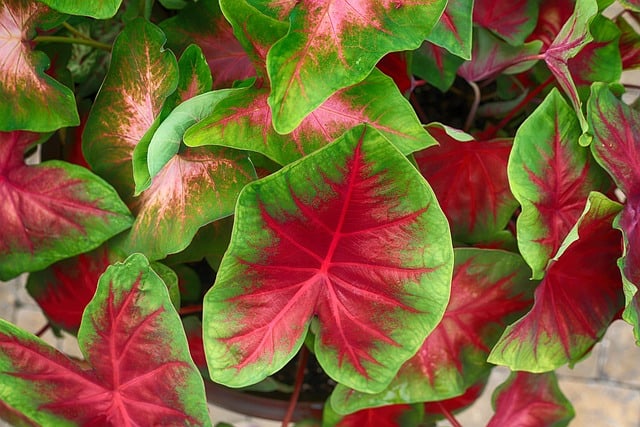Caladiums are prized for their colorful and striking foliage, making them a popular choice for indoor and outdoor gardens. However, one common issue that many gardeners face is when the leaves of their caladium plants start turning brown.
While this may be alarming at first, understanding the reasons behind this discoloration can help you take the necessary steps to prevent it from happening again in the future.
There are several factors that can cause caladium leaves turning brown, including watering issues, temperature and light factors, soil and drainage considerations, diseases and pests, and nutrient deficiencies.
Each of these factors can have a significant impact on the overall health and appearance of your caladium plants, so it’s important to be aware of them when caring for your plants. By taking a proactive approach to caladium care, you can help ensure that your plants remain healthy and vibrant throughout the year.
Key Takeaways
- Caladium leaves turning brown can be caused by a variety of factors, including watering issues, temperature and light factors, soil and drainage considerations, diseases and pests, and nutrient deficiencies.
- To prevent caladium leaf problems, it’s important to pay attention to your plant’s watering needs and ensure that it is receiving the right amount of light and temperature.
- Proper caladium care throughout the year can help prevent leaf discoloration and other problems, ensuring that your plants remain healthy and vibrant.
Related posts:
Understanding Caladiums
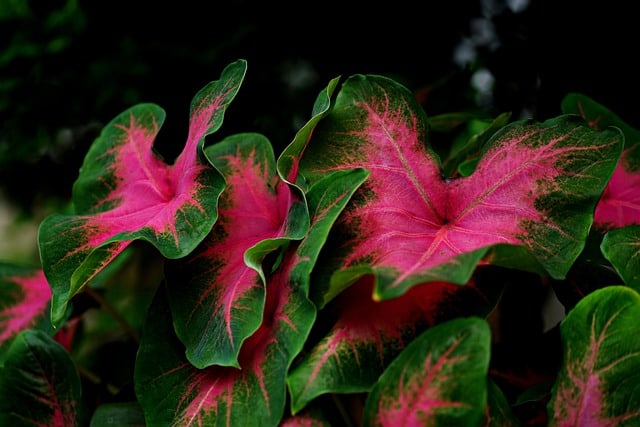
Caladiums are tropical foliage plants that are native to South America. They are highly sought after for their showy leaves that come in a variety of colors and patterns. These plants are typically grown for their attractive foliage and are not known for their flowers.
Caladiums are commonly grown as houseplants but can also be planted outside in warm climates. They prefer bright, indirect light and moist soil. They are not cold hardy plants and do not do well in temperatures below 65°F.
Prolonged exposure to cold temperatures will cause the plant to wilt. Try to keep them in an environment around 65-80°F in a warm humid spot away from drafty areas or open vents.
The leaves of the Caladium will turn brown because of too much direct sunlight, less than once per week watering, or humidity less than 50%. To prevent this, it is important to water the plant regularly and keep the soil moist.
Not enough water is just as bad for plants as too much! Check the Caladium’s soil; if the top 25% is dry then it is definitely time for a drink. If the Caladium urgently needs water, you can soak the pot in a bath of tepid water for a good half hour, then let it drain away. Continue watering normally after this.
The leaves of the Caladium will turn brown because of too much direct sunlight, less than once per week watering, or humidity less than 50%. To prevent this, it is important to water the plant regularly and keep the soil moist.
Caladium Leaves Turning Brown
Caladiums are known for their beautiful, vibrant leaves that come in various shades of green, pink, red, and white. However, sometimes the leaves can turn brown, which can be concerning for plant owners. In this section, we will explore some of the reasons why caladium leaves turn brown and what can be done to prevent it.
1. Lack of Water
One of the most common reasons why caladium leaves turn brown is due to a lack of water. Caladiums need to be kept consistently moist, but not waterlogged. If the soil dries out too much, the leaves can start to turn brown and crispy around the edges.
To prevent this, make sure to water your caladium regularly and ensure that the soil remains moist.
2. Too Much Sunlight
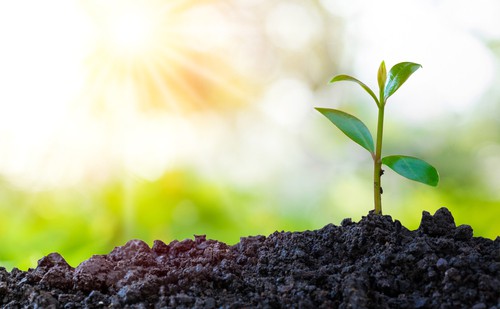
Caladiums prefer to be grown in partial shade or indirect sunlight. If they are exposed to too much direct sunlight, the leaves can start to turn brown and wilt. To prevent this, make sure to place your caladium in a location where it receives dappled, filtered sunlight rather than direct sunshine.
3. Fungal Infections
Fungal infections can also cause caladium leaves to turn brown. If you notice brown spots or blotches on the leaves, it could be a sign of a fungal infection. To prevent this, make sure to keep your caladium in a well-ventilated area and avoid overwatering.
If you do notice signs of a fungal infection, remove the affected leaves and treat the plant with a fungicide.
4. Nutrient Deficiencies
Caladiums require a balanced mix of nutrients to thrive. If they are not getting enough of certain nutrients, such as nitrogen or potassium, the leaves can start to turn brown. To prevent this, make sure to fertilize your caladium regularly with a balanced fertilizer.
Watering Needs and Issues
Caladium plants require consistent and adequate watering to thrive. However, improper watering practices can lead to several problems, including brown leaves. Here are some watering needs and issues to keep in mind:
1. Watering Frequency
Caladium plants require regular watering to keep the soil moist but not waterlogged. The frequency of watering depends on various factors, such as the size of the pot, humidity, and temperature. In general, it is best to water the plant when the top inch of soil feels dry to the touch.
2. Overwatering
Overwatering is a common issue that can cause caladium leaves to turn brown and soft. When the plant receives excess water, the roots become waterlogged, leading to root rot and other problems. To avoid overwatering, ensure that the pot has proper drainage and avoid leaving the plant in a saucer filled with water.
3. Underwatering
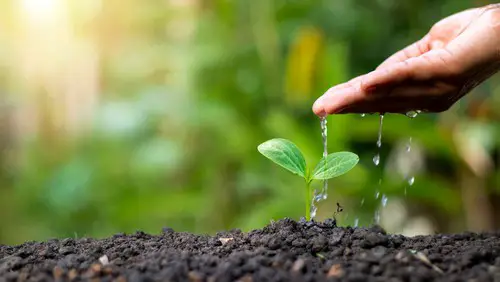
Underwatering can also cause caladium leaves to turn brown and dry. When the plant does not receive enough water, the leaves start to wilt and turn brown, starting from the tips. To prevent underwatering, ensure that the soil is moist and water the plant regularly.
4. Soaking the Plant
Soaking the plant can be an effective way to ensure that the roots receive enough water. To do this, fill a sink or tub with 2-4 inches of water, depending on the size of the plant. Then, set the plant in the water without the saucer to allow it to soak the water from the bottom.
Let the plant sit in the water for at least 30 minutes, and after that, feel the top of the soil to see if it has soaked up enough water.
5. Excess Water
Excess water can cause several issues, including root rot, fungal growth, and brown leaves. To avoid excess water, ensure that the pot has proper drainage and avoid overwatering the plant.
6. Dry Soil
Dry soil can cause caladium leaves to turn brown and dry. To prevent this, ensure that the soil is moist and water the plant regularly. If the soil is too dry, the plant may require more frequent watering.
Temperature and Light Factors
Caladiums are tropical plants that thrive in warm and humid environments. Temperature and light factors play a crucial role in their growth and health.
Temperature
Caladiums are not cold-hardy plants and do not do well in temperatures below 65°F. Prolonged exposure to cold temperatures will cause the plant to wilt. On the other hand, high temperatures can cause temperature stress, leading to leaf curling and brown spots.
It is recommended to keep the plant in an environment with a temperature range of 65-80°F. Avoid placing it in drafty areas or open vents, which can cause temperature fluctuations.
Light
Caladiums prefer bright, indirect light. Direct sunlight can cause the leaves to get sunburned, resulting in brown spots that eventually turn into holes. Filtered sunlight is ideal for these plants.
If the plant is not getting enough light, the leaves may turn pale or yellow. If the plant is getting too much light, the leaves may turn brown and crispy.
It is essential to find the right balance of light for your caladium plant. If you notice the leaves turning brown or pale, it may be due to inadequate or excessive light.
Soil and Drainage Considerations
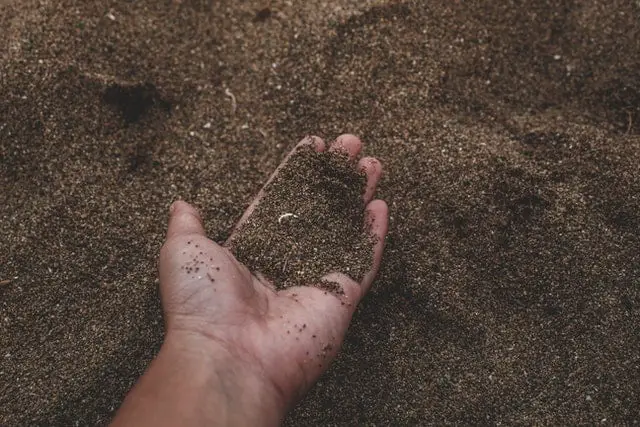
Caladiums require well-draining soil to grow healthy and prevent the leaves from turning brown. Poor drainage can lead to soggy soil, which can cause root rot and other diseases. Therefore, it is important to ensure that the soil is well-draining and that the water can flow freely through it.
When planting caladiums in the ground, it is recommended to add organic matter to the soil to improve drainage. Organic matter can help to break up heavy soils and also improve the soil’s ability to retain moisture. A good practice is to mix in compost or aged manure into the soil before planting.
For container-grown caladiums, it is essential to use well-draining potting soil. A soilless mix that contains peat moss, perlite, or vermiculite is ideal for growing caladiums in containers. The soilless mix will provide good drainage and also retain moisture, preventing the soil from drying out too quickly.
To ensure proper drainage, it is important to monitor the soil’s moisture level regularly. Caladiums prefer moist soil, but they do not like to sit in water. Overwatering can lead to soggy soil, which can cause root rot and other diseases. Therefore, it is important to allow the soil to dry out slightly between watering.
Nutrient Needs and Deficiencies
Caladium plants require a balanced diet of nutrients to grow healthy and produce vibrant foliage. Nutrient deficiencies can cause leaves to turn brown, wilt, or drop prematurely.
The most common nutrient deficiencies in Caladium plants are nitrogen, phosphorus, and potassium. Nitrogen is essential for the growth and development of leaves, while phosphorus is necessary for root development. Potassium helps the plant to resist diseases and stress.
To prevent nutrient deficiencies, it is recommended to fertilize Caladium plants regularly. A balanced fertilizer with an N-P-K ratio of 5-5-5 or 10-10-10 is ideal for Caladium plants. Fertilizers should be applied every two to three weeks during the growing season, from spring to fall.
Over-fertilizing Caladium plants can lead to fertilizer burn, which can cause leaves to turn brown and curl. It is important to follow the recommended dosage on the fertilizer label and water the plant thoroughly after fertilizing.
In addition to the primary macronutrients, Caladium plants also require micronutrients such as iron, magnesium, and calcium. Iron deficiency can cause leaves to turn yellow, while magnesium deficiency can cause interveinal chlorosis. Calcium deficiency can cause necrotic tips on new leaves.
To prevent micronutrient deficiencies, it is recommended to use a micronutrient supplement or to apply compost or manure to the soil. It is also important to maintain the soil pH between 5.5 and 6.5, as micronutrient availability can be affected by soil pH.
Environmental Factors
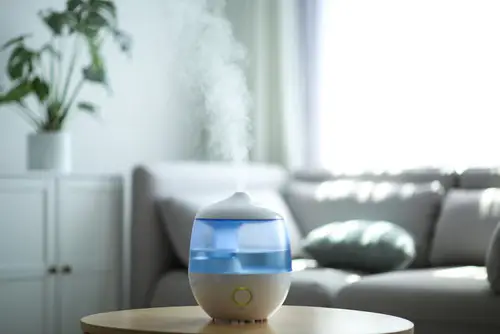
Caladiums are tropical plants that require a warm and humid environment to thrive. Environmental factors such as temperature, humidity, and light can cause caladium leaves to turn brown.
One of the most common reasons for caladium leaves turning brown is exposure to hot and dry conditions. Caladiums prefer to be grown in partial shade, where they can receive bright, indirect light.
Direct sunlight can cause the leaves to scorch and turn brown. If the plant is exposed to too much sun, it is recommended to move it to a shadier spot.
Humidity is another important factor to consider when growing caladiums. These plants require high humidity levels to thrive. If the air is too dry, the leaves will start to turn crispy brown on the edges. To increase humidity, mist the leaves often, add a pebble tray, or place a humidifier nearby.
Drafty areas and open vents can also cause caladium leaves to turn brown. Caladiums prefer to be grown in a warm, humid spot away from areas with high wind or air conditioning. If the plant is exposed to drafts, it is recommended to move it to a less drafty area.
Caladium Care Throughout the Year
Caladiums are tropical plants that require specific care throughout the year to keep them healthy and vibrant. Proper care will help prevent the leaves from turning brown and ensure that the plant thrives.
Spring and Summer
During the spring and summer months, caladiums will experience new growth. It is important to keep the soil moist but not waterlogged. Overwatering can lead to root rot, which can cause the leaves to turn brown.
Caladiums prefer well-draining soil that is rich in organic matter. Fertilize the plant every two weeks with a balanced fertilizer to encourage growth.
Caladiums thrive in warm, humid environments. Place the plant in a location that receives bright, indirect light. Direct sunlight can scorch the leaves and cause them to turn brown. If the leaves start to curl or wilt, it may indicate that the plant is receiving too much sunlight.
Fall and Winter
As the weather cools down, caladiums will enter a dormant period. During this time, the leaves will start to turn yellow and brown. This is normal, and it is important to reduce watering as the plant will not be actively growing.
Allow the soil to dry out slightly before watering. Overwatering during the dormant period can cause the tubers to rot.
In colder climates, caladiums will need to be dug up and stored for the winter. Carefully remove the bulbs from the soil and allow them to dry in a cool, dry location for a few days. Once dry, store the bulbs in a paper bag filled with peat moss or vermiculite in a cool, dry location.
Bulb Maintenance
Caladium bulbs will need to be divided and replanted every few years to ensure healthy growth. Wait until the plant has gone dormant before digging up the bulbs. Carefully separate the bulbs and replant them in fresh soil. Fertilize the plant with a balanced fertilizer to encourage new growth.
By following these simple care instructions, caladiums can thrive throughout the year. Proper care will help prevent the leaves from turning brown and ensure that the plant remains healthy and vibrant.
Additional Caladium Leaf Problems
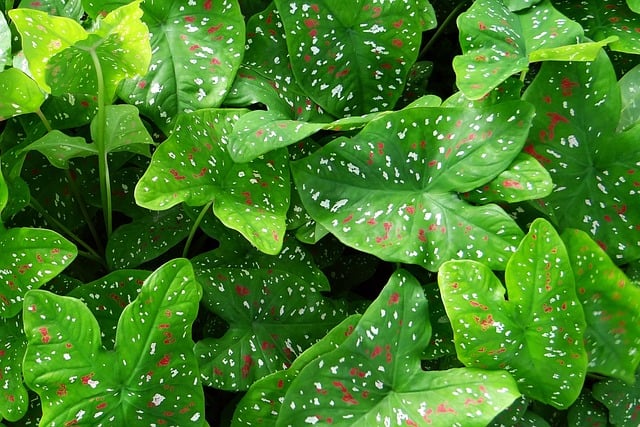
While brown leaves are a common issue with caladiums, there are a few other problems that can affect the health and appearance of the plant’s leaves.
1. Yellowing Leaves
If the leaves of a caladium are turning yellow, it could be a sign of overwatering. Make sure to let the soil dry out slightly between waterings, and avoid letting the plant sit in standing water. Yellowing leaves could also be a sign of nutrient deficiencies, so consider fertilizing the plant with a balanced fertilizer.
2. Wilting or Drooping Leaves
Wilting or drooping leaves can be a sign of underwatering or overwatering. Check the soil moisture level and adjust watering accordingly. If the soil is too dry, water the plant thoroughly and make sure the excess water drains out of the pot. If the soil is too wet, allow it to dry out before watering again.
3. Spots or Holes on Leaves
Spots or holes on the leaves of a caladium may be a sign of insect or disease problems. Check the plant for pests such as spider mites, aphids, or mealybugs. Treat the plant with an insecticidal soap or neem oil if necessary.
Fungal diseases such as leaf spot or blight can also cause spots on the leaves. Remove affected leaves and avoid overhead watering to prevent the spread of disease.
4. Stunted Growth or Dying Plant
If a caladium is not growing or appears to be dying, it could be a sign of poor health. Check the plant’s environment and make sure it is getting the right amount of light, water, and humidity.
Consider repotting the plant if it is root-bound, and make sure the soil is well-draining. If the plant is severely damaged, it may not be able to recover and may need to be replaced.
5. Sunburned Leaves
Caladiums prefer bright, indirect light but can be sensitive to direct sunlight. If the leaves are turning brown or yellow and appear scorched, it could be a sign of sunburn. Move the plant to a shadier location and avoid exposing it to direct sunlight.
6. Potting Issues
If a caladium is not thriving, it could be a sign of potting issues. Make sure the pot has good drainage holes and is the right size for the plant. Use a well-draining soil mix and avoid packing the soil too tightly around the roots. Consider repotting the plant if it is root-bound or if the soil is old and depleted.
7. Spathe Issues
The spathe is the large, colorful leaf that surrounds the flower spike of a caladium. If the spathe is not developing or is discolored, it could be a sign of poor health.
Check the plant’s environment and make sure it is getting the right amount of light, water, and humidity. Consider fertilizing the plant with a balanced fertilizer to promote healthy growth.
Frequently Asked Questions
How do you revive a dying caladium?
Reviving a dying caladium involves identifying the root cause of the problem and taking appropriate action. If the plant is suffering from underwatering, it should be watered thoroughly and regularly.
If the soil is too dry, it may be necessary to repot the plant. If the plant is overwatered, it should be allowed to dry out and the soil should be amended to improve drainage.
If the plant is not receiving enough light, it should be moved to a brighter location. If the plant is suffering from disease or pest infestation, it may be necessary to apply appropriate treatments.
Should I cut off dying caladium leaves?
If a caladium leaf is dying, it should be removed to prevent the spread of disease or pest infestation. However, it is important to avoid removing too many leaves at once, as this can weaken the plant and make it more susceptible to further damage.
It is also important to use clean, sharp tools to avoid damaging the plant.
What does an overwatered caladium look like?
An overwatered caladium may have yellowed or browned leaves, or the leaves may be wilting or drooping. The soil may also be soggy or waterlogged, and the plant may have a foul odor.
To prevent overwatering, it is important to allow the soil to dry out between waterings and to ensure that the plant is not sitting in standing water.
Why are the leaves on my caladium turning yellow and brown?
Caladium leaves may turn yellow or brown due to a variety of factors, including overwatering, underwatering, insufficient light, disease, or pest infestation. It is important to identify the root cause of the problem and take appropriate action to remedy it.
How can I prevent caladium leaves from turning brown?
To prevent caladium leaves from turning brown, it is important to provide the plant with adequate water, light, and nutrients. Caladiums prefer well-draining soil that is kept moist but not waterlogged, and they require bright, indirect light.
It is also important to avoid exposing the plant to cold temperatures or drafts, as this can cause the leaves to wilt or turn brown.
Why are my caladium leaves drooping?
Caladium leaves may droop due to a variety of factors, including underwatering, overwatering, insufficient light, or pest infestation.
To remedy the problem, it is important to identify the root cause and take appropriate action, such as adjusting watering or lighting conditions, or applying appropriate treatments for pests or disease.

Hey, I’m Lisa and I’ve been an avid gardener for over 30 years. I love writing, talking and living in the garden! Feel free to connect with me on my socials below

